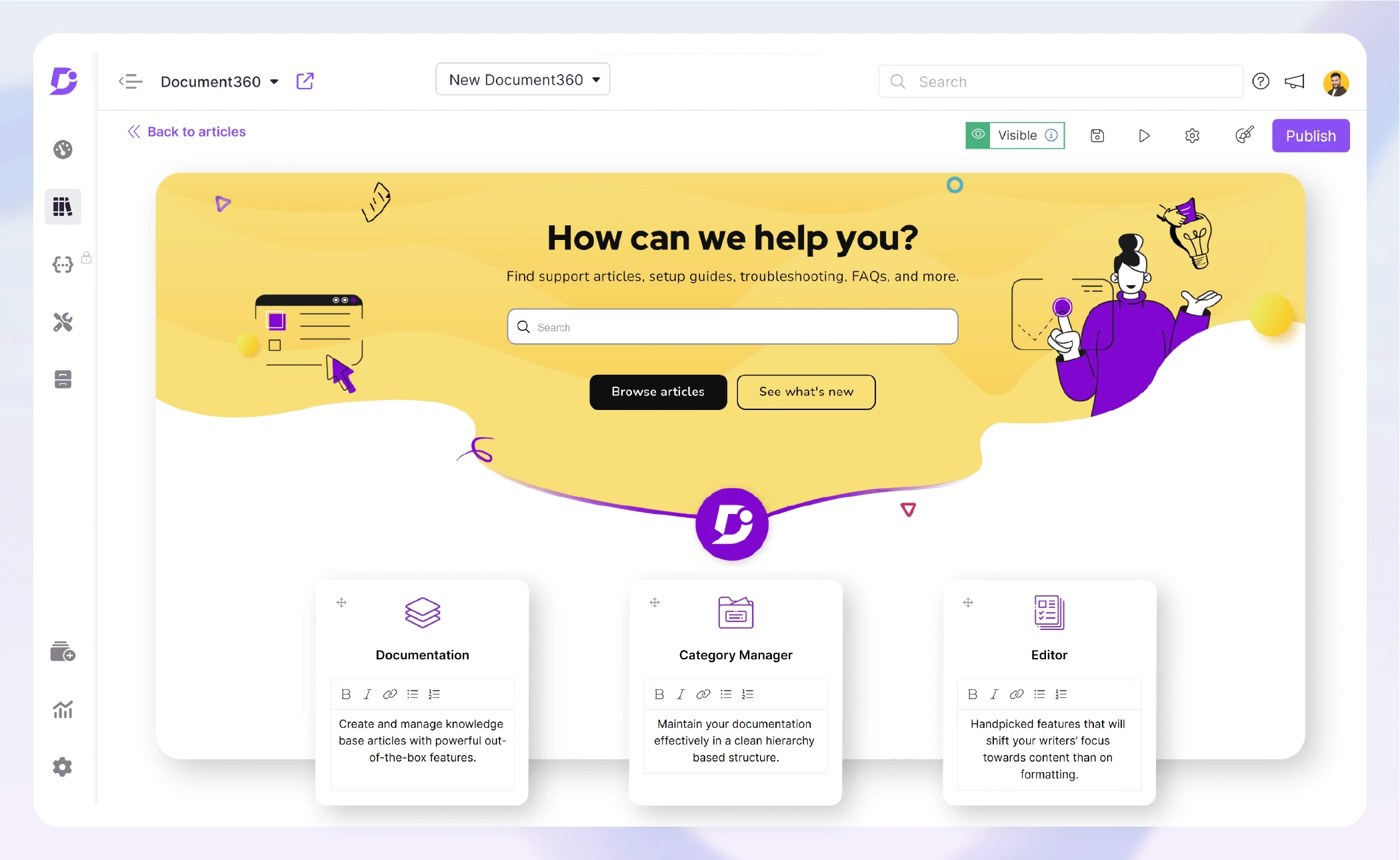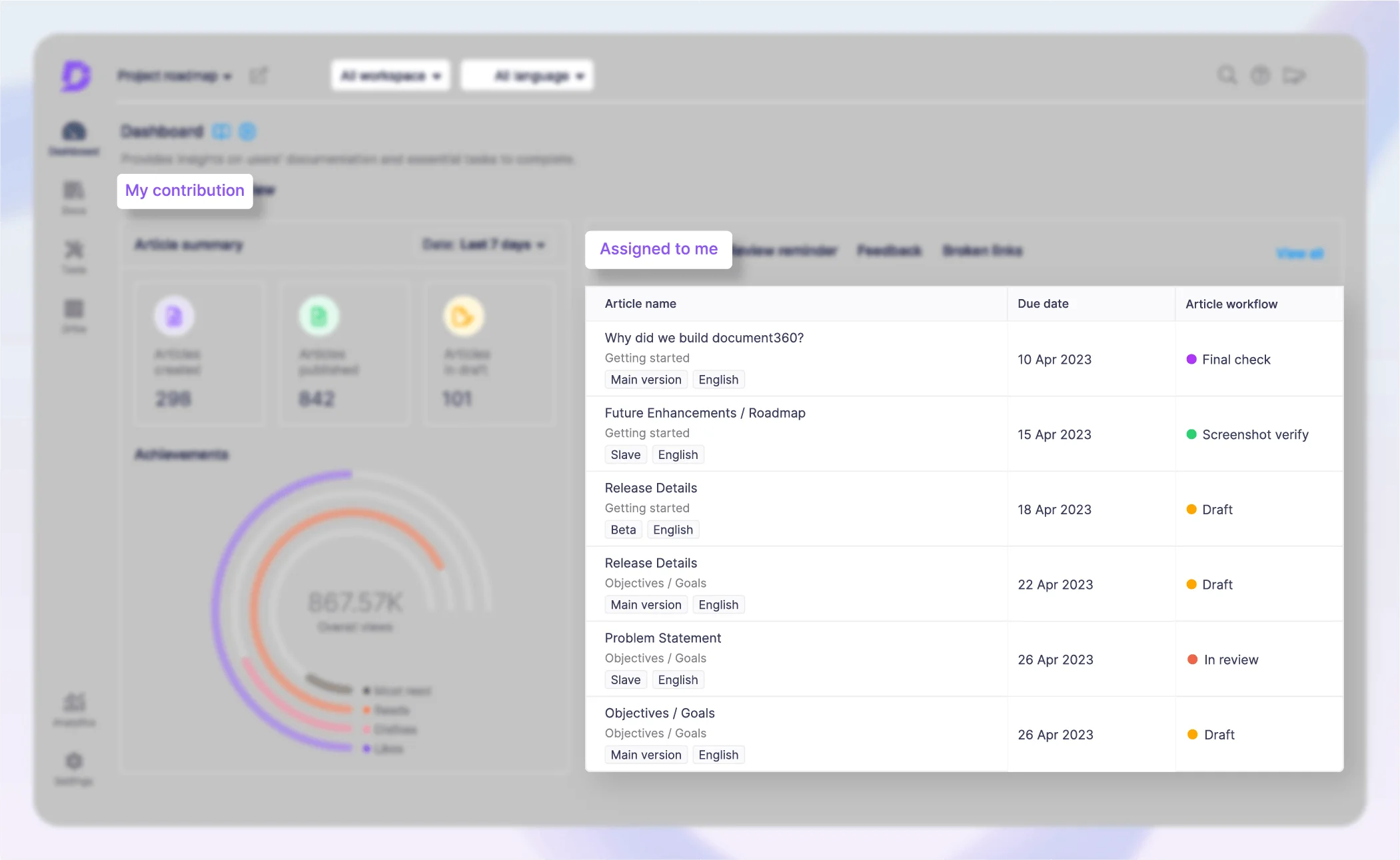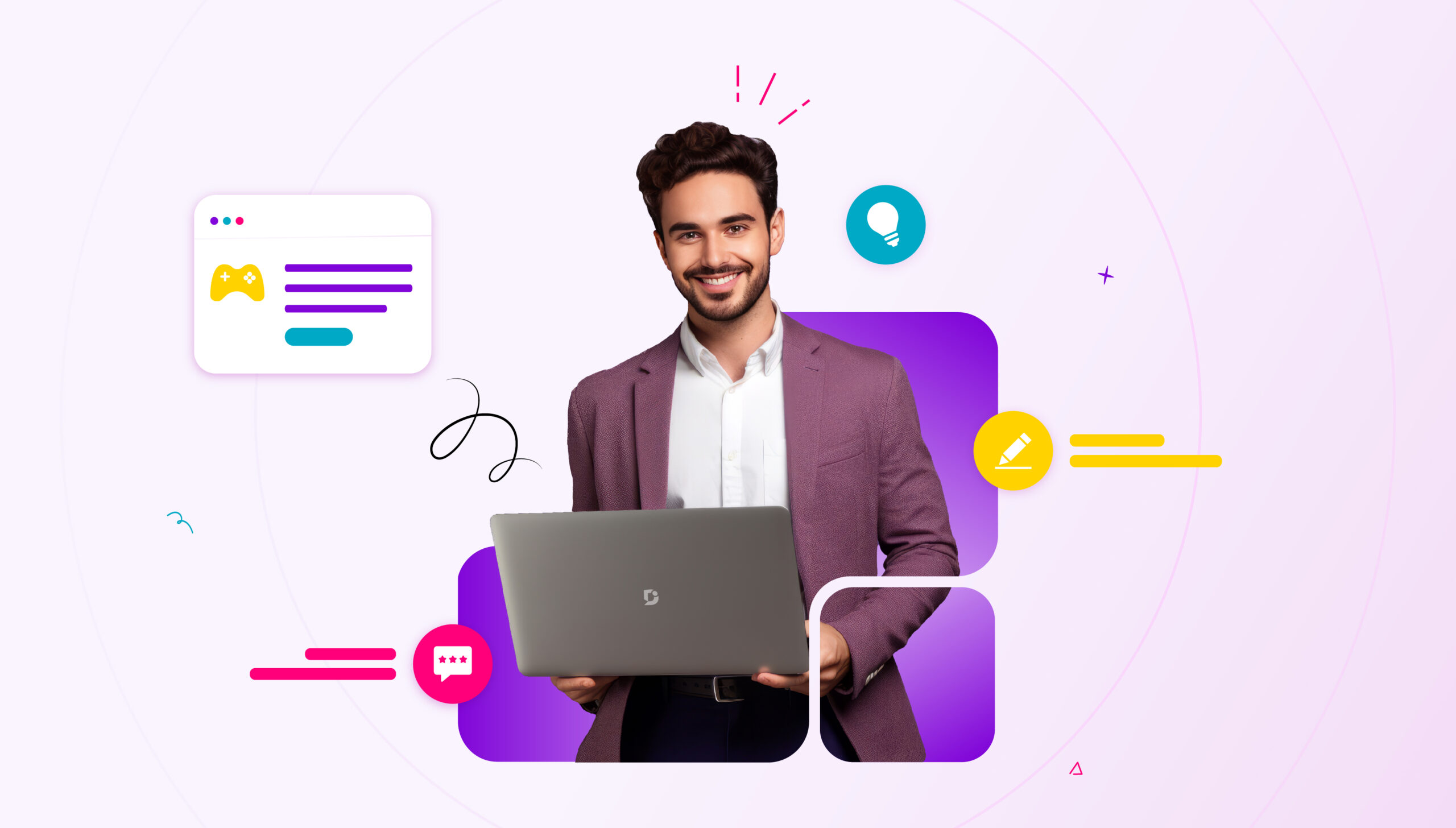Game design is one of the most exciting industries to work in at the moment. It’s your job to entertain millions of people around the world, providing hours of enjoyment. Not to mention, gaming is the highest grossing entertainment industry right now and is likely to be worth $321 billion by 2026.
However, the path to designing a game is not always easy. Teams of people are often involved, including artists, developers, designers, and product managers. That’s why a game design document is always an essential tool during this kind of project.
Once you’ve come up with your fantastic idea for a game, you need to document it. Even if you’re an indie developer, compared with an established institution, documenting your requirements is still essential for success.
Game design is so much more than coding. You’re often building amazingly complex worlds and stories for the delight of players. Players must progress, earn points or rewards, and access hidden levels. For a game of any complexity, this is where a game design document can really help, even for puzzle games, which 65% of people are reported to play.
What is a Game Design Document?
A game design document is a comprehensive guide that clearly explains what your game is and how it works. It can be a single page or several pages long. When writing your GDD, envision clearly what you want it to accomplish and construct your document appropriately.
You must include the following key elements in your GDD:
- The idea behind your game (concept).
- The timeline for milestones in the development of your game.
- Concept art, storyboard, character profiles.
These basic elements are enough to get your basic game design document started. We’ll explore in more depth what you need to add to your GDD in a later section.

Example of game documentation created using Document360
Even the most agile teams still require some form of internal documentation. Your game design document, or GDD, is at the heart of your documentation. Teams that change rapidly and often, like agile teams, are in even more need of a continually evolving document sharing their vision for their game.
A game design document can seem anathema to the entertaining experience of actually playing a game that has been well-designed. The reality is that even creative game designers need robust and accurate technical documentation to work from, especially within a team.
Why Should You Create a Game Design Document?
First of all, the game design document records the difference between your past and present self. Just like a developer’s code can seem incomprehensible to them six months from when it was first written, a typical game is always changing. Your game design document reminds you of your original plan, and that’s why you should also update it regularly.
People often consider creative projects incompatible with documentation. The reality couldn’t be further from the truth. Clearly spelling out your plan in the GDD increases your ability to see the project through to completion. It provides critical information for essential stakeholders.
Just like any other documentation, the GDD preserves knowledge that would otherwise be lost or forgotten. You may be an extremely talented solo indie developer, but it’s more likely you’re working as part of a team that could even be located in different places. You are educating your team about the purpose and intention behind your game. The document is still valid even if the details change over time.
Provide a Roadmap for Game Development with Clear Milestones
In the game design document, you can provide information for all stakeholders in your project. This is especially helpful considering the trend for remote teams, multi-studio collaborations, and hiring freelancers.
If everyone is on the same page, you can be assured that your game will develop according to plan. You’ll be able to match your GDD to a project management tool that can help you turn the idea into a reality.
Ensures Smooth Execution
Following the design document means that teams can collaborate in a more streamlined fashion. The smooth execution of the project depends on each contributor’s thorough understanding of requirements, technical specifications, platform dependencies, design decisions, and the purpose of the story.
The faster and more effectively you can develop your game, the more efficient you are with your budget. You can release your game on the market much more quickly and start reaping the benefits, potentially paying back investors.
Makes your Game Vision More Effective
A good GDD means the vision for your game can come to life more readily. This is because your game idea is no longer just an abstract concept. However you imagine your game actually being designed, written, coded, developed, and sold, it is more likely to become reality if you articulate it in a game design document.
In a way, a GDD helps develop the culture in your team because everyone understands the vision. The participations and contributions of your team members are more valuable as everyone is working as part of the team.
Check out the video to manage Internal Documentation, SOPs, Onboarding
Who Writes and Reads the GDD?
Just like in a movie production, no single person designs and develops a game. It’s a group effort. You need artists, designers, developers and more. The idea of a game can also be the product of a team. That’s why you should use collaborative documentation software to create your game design document. This is how you support multiple contributors.
Document360 is one of the best tools for creating your game design document. This is because you can easily update your documentation, collaborate on content, and include visuals. The creatives behind game design enjoy using our intuitive, user-focused software.
So the writers of a GDD include everyone who was initially involved in the conception of the project. The readers of the document encompass anyone who is a contributor to the design and development of the game. This can even include supporters found through crowdfunding campaigns or investors interested in financing your project.
Thus, you can host the GDD on a knowledge base that enables authors to write the document and also includes read-only users. You can operate a bit like an internal wiki where you control the level of permissions for contributors to the document, allowing multi-author collaborations. Therefore, you could enable the original game designer to have full permissions for writing and editing, while freelance developers would only be able to comment.
Also Read: How to Create a Software Design Document?
What to Include When Writing a Game Design Document
When you create your game design document, you can include several key elements that will ensure your document is as comprehensive as possible.
Game Concept
Simply put, the game concept describes what the player will actually experience when playing your game. For example, your game concept could be an MMO that takes place in a sci-fi/fantasy realm where the players use magic beans for currency.
Game Features & Mechanism
Include the features of your game in this section and how your game works, including the story, characters, unusual selling points, visual style and anything else that ultimately contributes to your game. You might also add information about the enemies who will appear in your game, game lore, weapons available to the players and the controls they will use to navigate through the game, to name a few elements.
Visuals and Sound
Tell your readers what your requirements are for visuals and sound, which is an important part of bringing the game to life and creating an immersive experience. You might suggest the type of music, overall style and impression of the landscape.
User Interface & Controls
The way a user interacts with the game is through the user interface, so you must include information about its design and how users can control their character or manipulate the game. This will be through specific controls on the controller, keyboard, or however the user accesses the game. With mobile games dominating 50% of the gaming market, simple controls are a top consideration when designing the game.
Technical Requirements
The technical requirements of your game are important, such as platform processing speed, memory capacity, storage, compatibility, and more. These will determine how you market and sell your product to potential customers.
Timeline & Major Milestones
In this section, you’ll want to include the target release date, development milestones, dates for marketing campaigns, and so on. You don’t have to stick rigidly to these deadlines, which can be fluid and flexible depending on circumstances. Nevertheless, it’s good to have estimates to communicate to bosses, investors, and so on.
Steps to Follow When Writing a GDD
When you write your GDD, you can go through a particular process to construct your document in the same way, every time. No matter what new game you want to develop, the structure behind the GDD is always the same.
Brainstorm Your Ideas
First, brainstorm your ideas for your new game. What story do you want to tell? What is unique about this particular game for players and why will they find it interesting? How will you engage your players as they move through the levels? How is it different from other games already on the market?
Give Your Document a Structure
Your GDD should not be a wall of text produced in Microsoft Word. You should use dedicated documentation software to give it a structure and guide your readers through the information you want them to understand. Use categories, links, and headings.

Draft Your Document Concisely
One huge reason why no one reads documentation is because your document is too long. Keep this in mind when drafting your GDD by including only the most relevant information. Some people are fans of the one-page game design document, but if you need to make it longer to make it meaningful, then don’t worry. As long as your writing is engaging, interesting, and effectively conveys the idea behind your game, you should keep the attention of your readers.
Collaboratively Review
Once the document has been created, submit it for a collaborative review among your team. Answer any questions raised about your documentation. If collaborators don’t understand an element of your game, they won’t be able to develop it. Users won’t understand it either.
Revise the GDD
Although you may have created a powerful GDD during the first round, multiple revisions are necessary to ensure your document stays relevant. If you realize that you want to expand to multiple platforms, requiring extra development time and marketing, add this to the GDD.
Also read: Test Specification Documents: A Complete Guide
Best Practices in Writing a Game Design Document
Choose the Right Tool
As we hinted at earlier, Document360 can be your best friend when writing a game design document. You can also use Document360 to house other internal documents relating to the design of your game, such as technical requirements and system architecture.
Once your team gets used to using Document360, you can use it for all sorts of projects by hosting multiple knowledge bases. This means that even if your team is an agency or a studio developing a portfolio of games, you can document them all in Document360.

Schedule a demo with one of our experts to take a deeper dive into Document360

Use Visual Aids for Clear Communication
In game design and development in particular, you’ll want to focus on the visuals. Games often feature breathtaking landscapes and compelling characters. Most games are visual to a large degree, and your GDD should be no different. Text is important, but you can include concept art and diagrams to illustrate your game.
Involve the Team and Collaborate

One of the main complaints game design teams have about game design documents is that no one reads them. Well, of course, with any documentation, no one will read it if they don’t consider it useful. A collaborative, living document will involve the whole team, sharing information that everyone will want to access.
Update it Whenever a Change Occurs
Although your GDD reflects the conception of your initial idea, it’s perfectly acceptable to update the original document as plans change. If you originally said that the player only had a choice of one character but you now want there to be three options, include that. If you add the ability to customize the character’s appearance – you guessed it. Write it in the document.
Also Read: Product Requirements Document: Benefits, Tips & Examples
Wrapping Up
You should resist the temptation to jump straight in and start coding in favor of carefully planning your game design document. It will reduce confusion later down the line, help educate collaborators, and enable you to meet important milestones. If we don’t articulate our ideas and document them, then even the most inspired and exciting project will fail.
Weigh up the time spent documenting versus the actual return you expect to receive from the document. Don’t spend weeks and weeks creating a GDD that no one will read and becomes obsolete. Instead, jot down the essentials and create a document that your team is eager to read.




 –
– 

